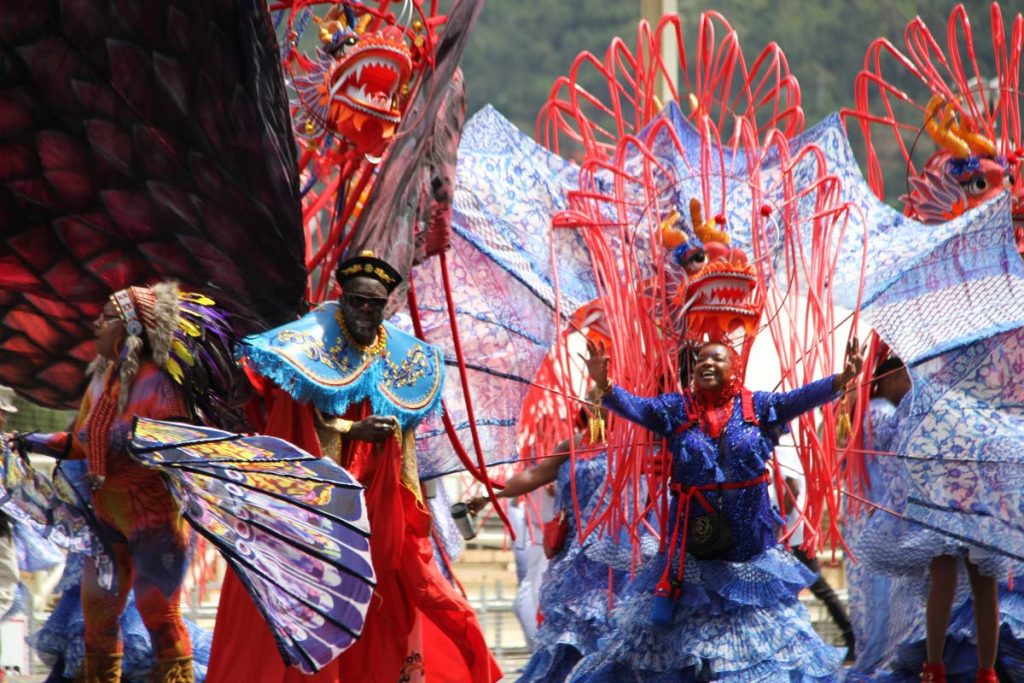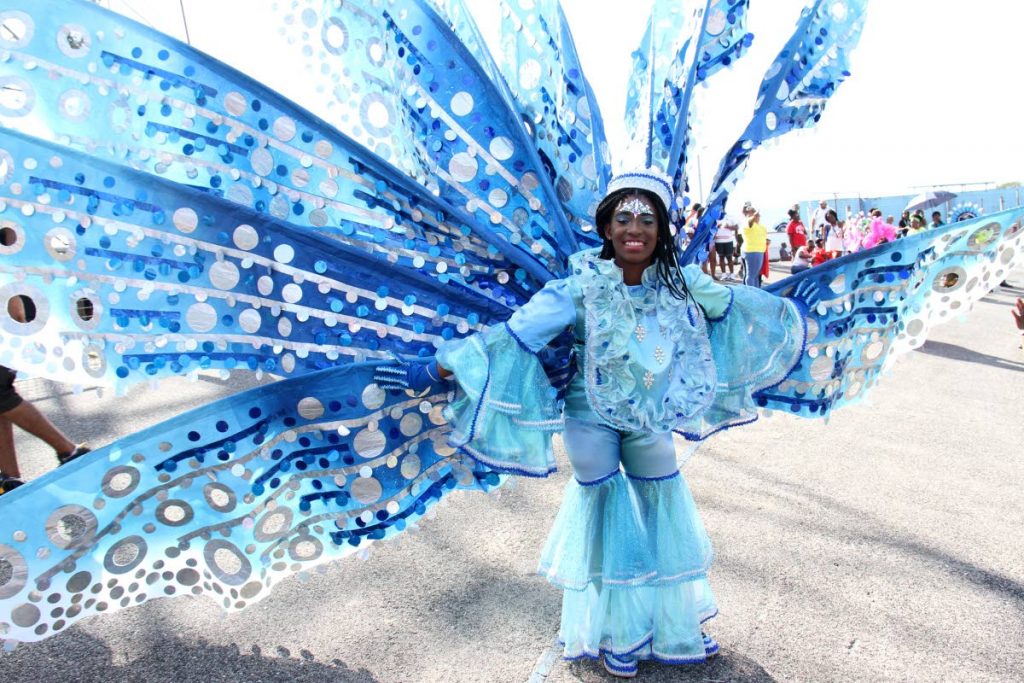No fees for selfies

Contrary to mistaken reports, during Carnival you can't be charged for taking a selfie with your friends in mas bands.
The mas fraternity’s new governing body, the TT Carnival Bands Association (TTCBA), wants the public to know that while people making and taking photographs, documentaries, videos and other recordings for commercial use will have to pay copyright fees, people doing so for personal use will not.
Gerard Weekes, the organisation’s CEO, explained it's only if works of mas are captured for commercial intent, directly or indirectly, that a fee will apply.
Weekes spoke with Sunday Newsday, along with Dr Vijay Ramlal Rai, the vice president and founder of the TT Copyright Collection Organisation (TTCO), responsible for protecting works of mas and live performances, and the only collective management organisation (CMO) responsible for collecting intellectual property fees on behalf of the TTCBA.
Ramlal Rai added that the organisation hopes the protection of intellectual property of works of mas for designers, bandleaders and performers can generate income for them, both locally and internationally.
Works of mas, under the Copyright Act, is defined as “an original production intended to be performed by a person or a group of persons in which an artistic work in the form of an adornment or image presented by the person or persons, is the primary element of the production and which such adornment or image may be accompanied by words, music, choreography or other works, regardless of whether the production is intended to be performed on stage, platform, street or other venue."
Ramlal Rai added that the protection of intellectual property rights for works of mas had been ignored for a long time, even though the law had been on the books for some time.
He said there were three main areas of intellectual property rights. One was copyright, which concerns the author/composer of music, the second is neighbouring rights, which addresses the rights of performers and producers of sound recordings and broadcast organisations, and the third was works of mas.
These involve the designer, the design of the costume, the performer in the costume and the music used to perform.

10-02-2019
PHOTO BY: CHEQUANA WHEELER
Weekes said over the years TT’s talents had been exploited, and designers, bandleaders and performers had had their images used but no royalties paid. Weekes added he had even seen his image, as a King of Carnival, in a magazine in the US on sale for US$100.
He added that copyright fees must be collected from an authorised body. “No one else can walk around and say, 'Pay me for music.' You have to go to an authorised body.”
For works of mas, he said, the TTCO is the only body authorised to collect copyright fees on behalf of mas, which apply to media such as photography, videography, live streaming, and documentaries.
Weekes said in the past fees were collected but thanks to a waiver, nothing was passed on to the designers, bandleaders and others.
“The TTCBA, over the years, has been in the business of trying to get into the picture (and) was clamouring for the removal of that waiver so that the rights can be collected by the right authorised body and translated into the right payments for the practitioners.”
He said in 2019 the TTCBA, now on the board of the NCC, got the commission to remove the waiver from the application form.
He said, “Now any foreigner or local individual who has an interest in taking photos, videos, doing a documentary or streaming Carnival for commercial use must pay the royalties. They must be accredited first and must pay some royalty. So that must be passed on to the practitioners.”
Explaining the process, Weekes added that the rights involved in a simple photo include those of the photographer, the designer of the costume, the bandleader and the performer.
He added there was a perception that if someone took a picture with their phone and put it on Facebook to send to their friends they would attract rights. But that was not so, he said, because that is for private use.
He said if they were to take their private photos and sell them to a magazine or for use in a documentary, then they would be attracting the necessary rights, but that was not so once the photo or video was for private use.
News photographers do not attract any royalties either, as they act in the public interest. He said the law allows for the media to work in a public space, but the media house must be accredited. However, as for photos for a magazine, those would cross into the domain of commercial use, which would attract royalties.
Asked about a situation in which someone approached you for a personal photo for commercial use, Ramlal Rai said once the image is to be in the commercial setting of a magazine or a movie, then the individual should contact the band or the TTCO, which would then seek an agreement with the organisation or person who wants to use it commercially.
TTCO’s mandate, Ramlal Rai said, was to ensure that bandleaders and designers benefited from their intellectual property. Weekes said that is why the TTCBA is engaging an authorised CMO.
“As far as TTCBA is concerned, whether you are from association A, B, C or TTCBA, your rights will be taken care of by us, once we identify you are to benefit from the copyright royalty we received.”
Weekes promised the royalties would be paid to the practitioner.
Asked how the payment reaches the designers, bandleaders and performers, Weekes said, “The TTCO will determine what the royalty is, based on discussions with the individuals and the intent of the use of whatever platform they are using.” The TTCO will take a percentage of that for administrative services and the management of that process, which amounts to 30 per cent. Weekes said the remaining 70 per cent will come to the TTCBA and ten per cent is taken for the TTCBA’s administrative services, with 60 per cent then being paid to every individual concerned.
Ramlal Rai said in some cases one person receives all of the funds if he/she is the designer, bandleader and performer of their own costume.
Asked about a case in which someone photographs masqueraders in a band for commercial use and those people have paid for their costumes, Weekes said that becomes the property of the bandleader, who may have a clause which would waive the rights of the masqueraders to any benefits or could decide to pay the masqueraders.
Ramlal Rai and Weekes said the latter would become a new deal which would then involve the CMO, in this case, the TTCO, to get whatever royalty is necessary.
Asked if this would translate into cheaper costumes for masqueraders, Ramlal Rai and Weekes said, “Let us hope so.”
“The cost of costumes can be reduced, since there are real benefits,” Weekes said.
“Intellectual property needs to be addressed properly. You can’t just take those photos now and run away with it and do as you choose, while the people who are putting their skills and talents together are struggling to make ends meet.”


Comments
"No fees for selfies"